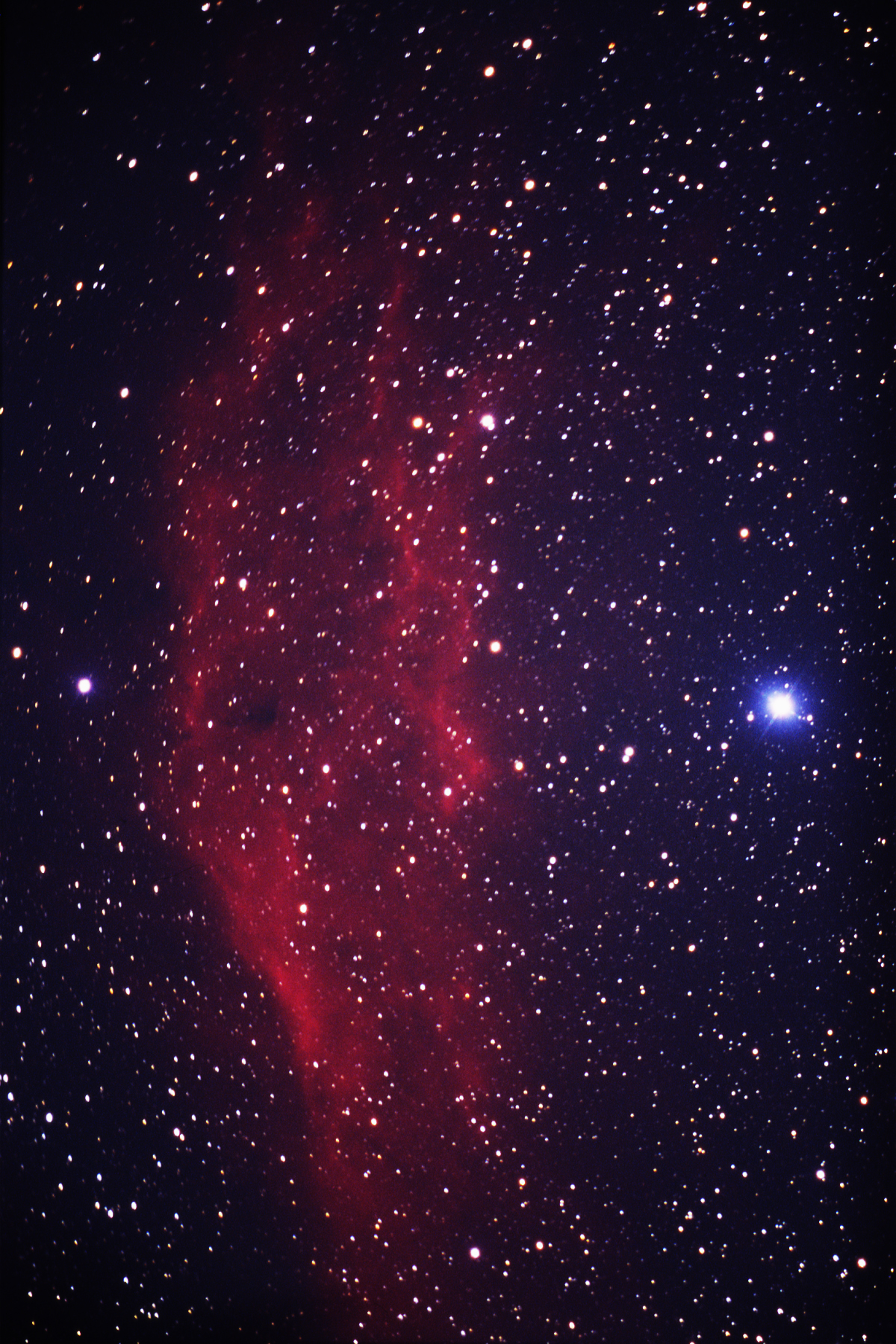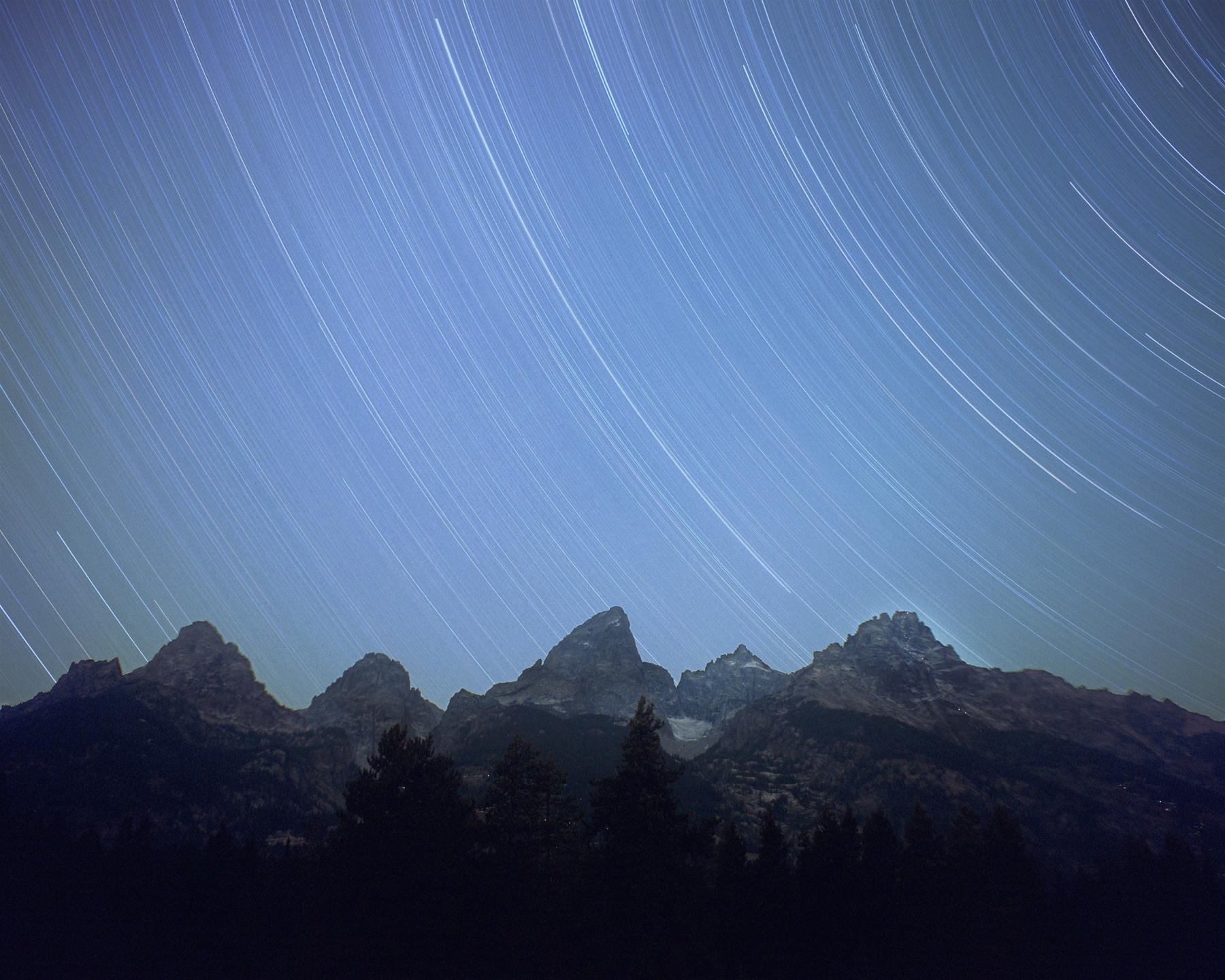The route over Teton Pass was the most direct way to Jackson Hole, the tourist and ski town that is a gateway to Grand Teton National Park. The trip over the pass was uneventful, but for the uneasy feeling I get when a train of local vehicles accumulate behind me. I am comfortable driving mountain roads, but evidently not comfortable enough, as I never seem to be able to negotiate the tight turns at a speed to satisfy these other drivers. I blame the handling of my minivan, which is a little bit better than a wooden box on roller skates. Somehow the locals know how to take the turns, as they demonstrated whenever I was able to find an edge of the road to pull over and let them by.
The town of Jackson has become so popular in recent years that it is not much fun anymore. The crush of summer visitors makes for traffic jams and an excessive number of t-shirt shops. An art fair was being held this weekend, an event I would normally explore, but the mass of humanity discouraged me, and I was holding to my mission to take pictures that night by avoiding the distraction.
In spite of the large number of people, the density was actually less than normal for this time of year. My brother had laughed when I told him of my plan to find a room in Jackson, yet because fires to the north, in Yellowstone, had progressed across a major artery to the area, the usual flow of traffic had dropped, and as a result, there were vacancies in Jackson!
I stayed at the Wolf Moon Inn, a tidy and pleasant hotel on the side of town closest to the park. I had arrived early enough to attempt to fit in a nap before my nighttime schedule would begin. As usual, tired though I was, it was an ineffective effort. Why is it that naps don’t work for me?
In the late afternoon, I headed into the Snake River valley. Cutbacks in funding resulted in an unattended entrance gate at Grand Teton National Park. I had an all-parks pass, but still, this seemed like a penny-wise but pound-foolish consequence of government policy. I proceeded down the road that skirted the very base of the mountain range, examining each turnout and historical marker until finding the Glacier View trailhead, a central turnout tucked under the dominant Teton peaks. This was sheer luxury for an astrophotographer. Concrete sidewalks, a restroom, a private parking lot, a direct view of the prime peaks, all to the westward (mountain) side of the main road.
I set up my equipment, an easy task with my car right next to a concrete slab on which my telescope mount fit perfectly. I hiked a short distance into the adjacent field and found places to station my fixed tripod cameras. I was hoping to make a long star trail exposure, maybe an all-night shot.
This is always risky. To commit a camera to a single frame of film for the whole night exposes it to an ever-increasing set of things that can go wrong during that time. Lens fogging, battery failure, accidental bumps to the tripod, unexpected light sources flashing into the lens, initial errors of focus or aperture, and a thousand other things can ruin the frame.
The risks can be mitigated by using multiple cameras, and of course by reducing the shutter time to fit more than one shot in the evening, which spreads the risk over more than one frame. But then none of them will be an all-night shot. Life is filled with trade-offs.
I made a couple of short test shots and discovered that, as nice as my turnout location was, there was traffic on the road, each car’s headlights sweeping across my field of view and lighting up nearby trees in the scene, and if I was not careful, destroying my night vision after an accidental glimpse into the glare. It was hard to keep a shutter open even for 60 seconds without a pair of headlights showing up. I hoped that the traffic levels would diminish after midnight.
In light of this, I made the tradeoffs for managing my cameras that night. I would make a variety of exposures but dedicate one camera to stay open during the entire dark sky period between astronomical twilight, an interval that is actually quite short in midsummer, only five hours (until moonrise) on this night. I prepared the cameras and opened their shutters.
With the fixed cameras now open and collecting photons, I returned my attention to my telescope and its alignment and focus. I had several deep sky targets for that night, M101, the spiral galaxy that had eluded me earlier, the California Nebula, and M81, M82, a pair of galaxies that can be photographed together on the same frame.

These objects kept my attention through the night. I would spend my time setting up each shot, then when the shutter was open and the autoguider took over, I could check on the progress of my fixed cameras, occasionally advancing to another exposure and making notes on the details of all of my fragments of film set out to capture little bits of the night sky.
I had moments of time to gaze up to the quiet dark mountains next to me. Even though the only illumination was starlight, I could make out some vague details in their silhouettes. When I looked closely, I could see that there were other lights. Nighttime hikers on the mountain were making their way up and down the established routes to the peaks. Hiking at night seems like an odd activity, but there seem to be various reasons for it, including being able to position yourself at the right time and place for making a summit attempt. Whatever their purpose, a flashlight or headlamp is required equipment, and as the hikers traverse the trail and navigate the switchbacks their lights bob and sweep the landscape to ensure their footing.
Their lights are far away, and I was surprised that I could detect it, but the dark-adapted eye is remarkably sensitive, and the flashes and glints of light I could see on the side of the mountain were about as bright as some of the stars above. It now made sense that I could see a tiny flashlight from miles away. I wondered if my cameras would.
Even though the road traffic remained high until after 1 a.m., as I watched the hikers make their gradual progress up the mountain, I became aware of a light source that was not present: airplanes. It seemed that this westward view of the Tetons did not include any traffic lanes of air travel! I often find airplane lights making their own trails on my long exposures, intruding on the stellar trails I am trying to capture. It is rare to find such an airplane-free condition and I added it to the list of positive attributes of this site.
It was also a mild evening. Even though the Snake River valley is at 6000 feet elevation and one expects cold at night, something was moderating the local climate. As I found the position for best focus on my telescope, I recorded the temperature at 50-degrees. I expected that the temperature would fall and that I would have to adjust the focus to track it (the dimensions of the telescope change ever so slightly with temperature). But the temperature held steady that night, and the focus held steady as well.
My deep sky targets kept me happily busy all night, but all good things must pass and eventually an old crescent moon rose in the east, just before the beginning of the predawn astronomical twilight. My all-night exposures came to an end.
I packed up my equipment as the sky lightened and headed back to my room in Jackson, satisfied with a good night’s work. I would later find that some of my long exposures had captured the routes of those climbers whose flashlights I had noticed. But even before knowing whether any of my pictures had turned out, I knew that the night’s experience at the turnout would leave a fond memory of recording Teton trails.



Pingback: 7 Trail to the Tetons | Thor's Life-Notes
Pingback: 8 Yellowstone | Thor's Life-Notes